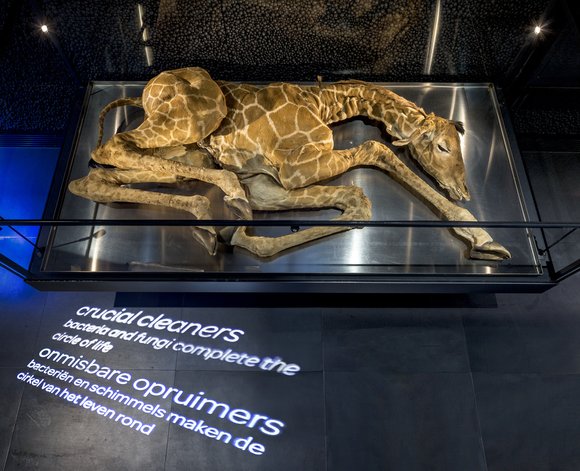
Visitors can see how microbes break down the body of a giraffe calf in the new exhibition ‘crucial cleaners’. Photo: Thijs Wolzak.
one man’s breath is another man’s death
With the death of an animal, nature's visible cleaners, such as vultures and fly and beetle larvae, get to work. But microbes play a much more important role in clearing away organic material, such as carrion. Animals with a combined weight of five thousand kilograms die naturally per square kilometre every year. Their remains are mostly disposed of by microbes, such as bacteria and fungi, which convert the dead organic waste into primary building materials, making them available to the rest of the ecosystem. Life on earth is teeming with such building materials, though their supply is limited as no new materials are added to the ecosystem. Microbes are therefore nature's indispensable recyclers.
giraffe
Micropia is displaying a giraffe that died in
Artis
in order to highlight the essential role played by microbes in cleaning up nature. The giraffe calf died a natural death in the zoo in 2014, when it was three days old. Micropia is the world's first museum to highlight the effect of the breakdown of organic matter by microbes.
